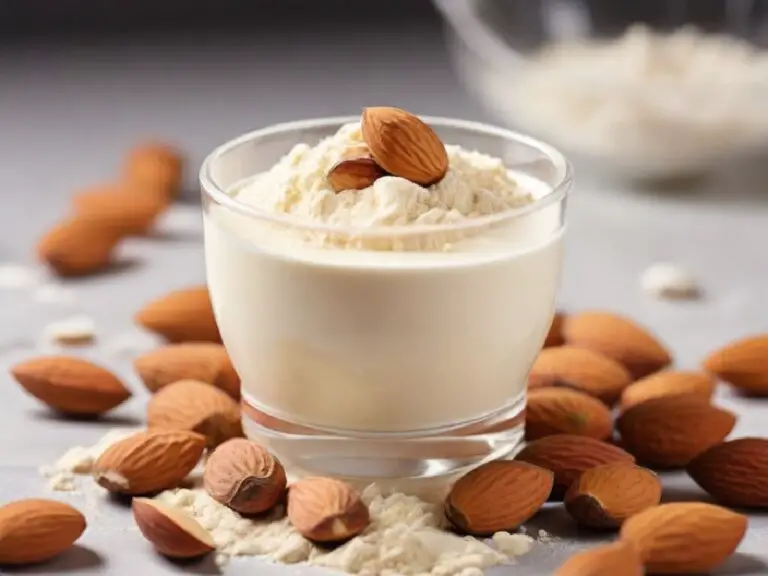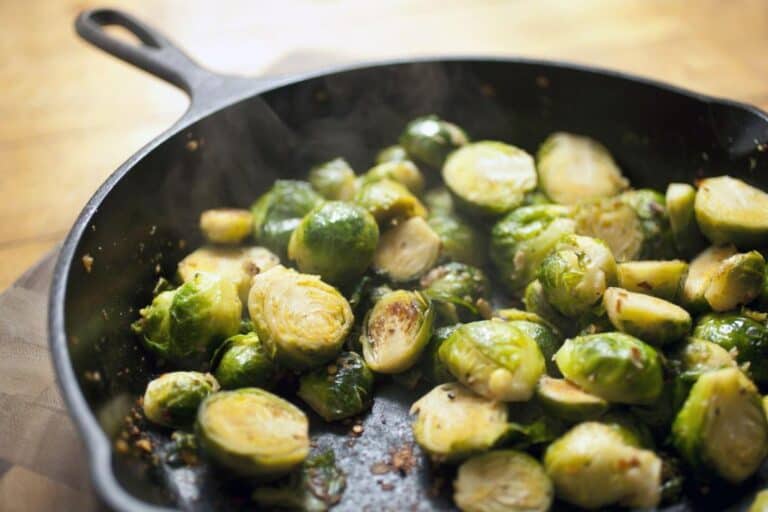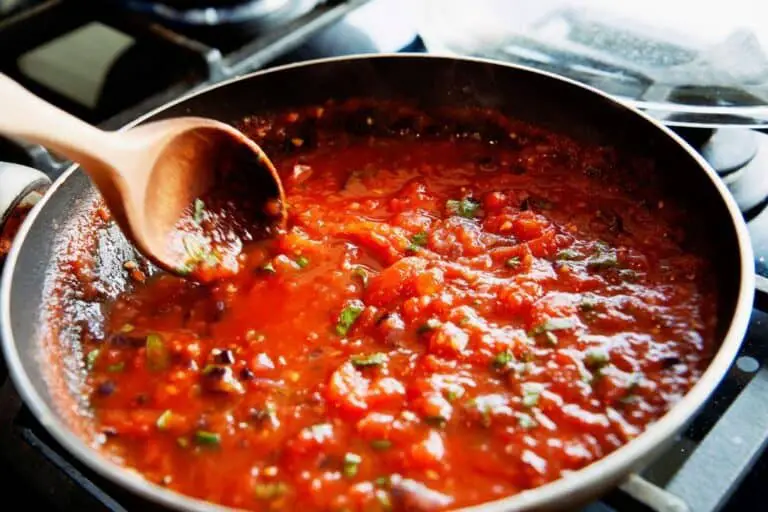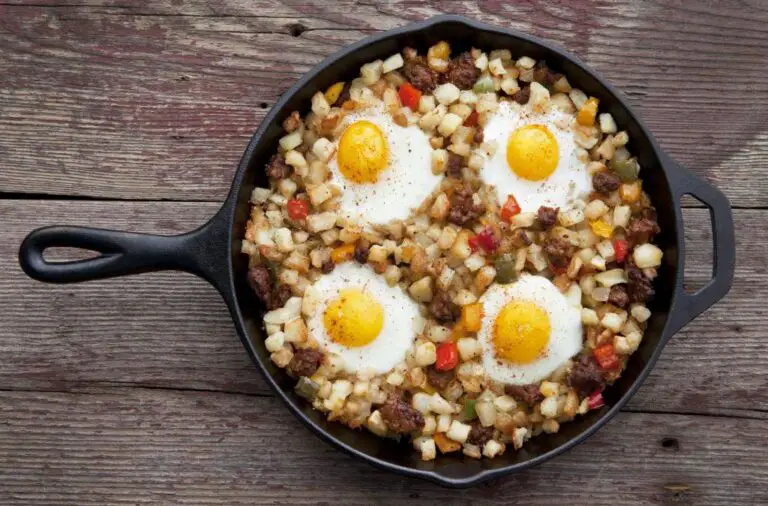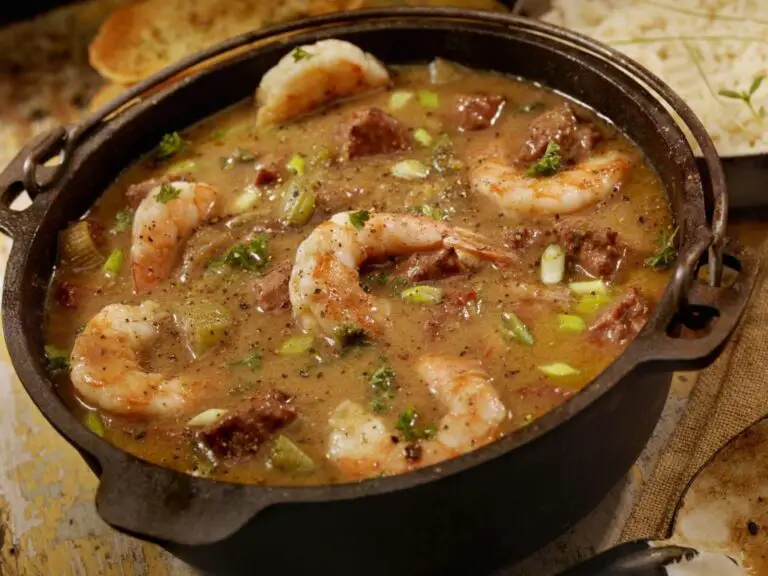What to Do with Broccoli Leaves? Many Uses of Broccoli Leaves
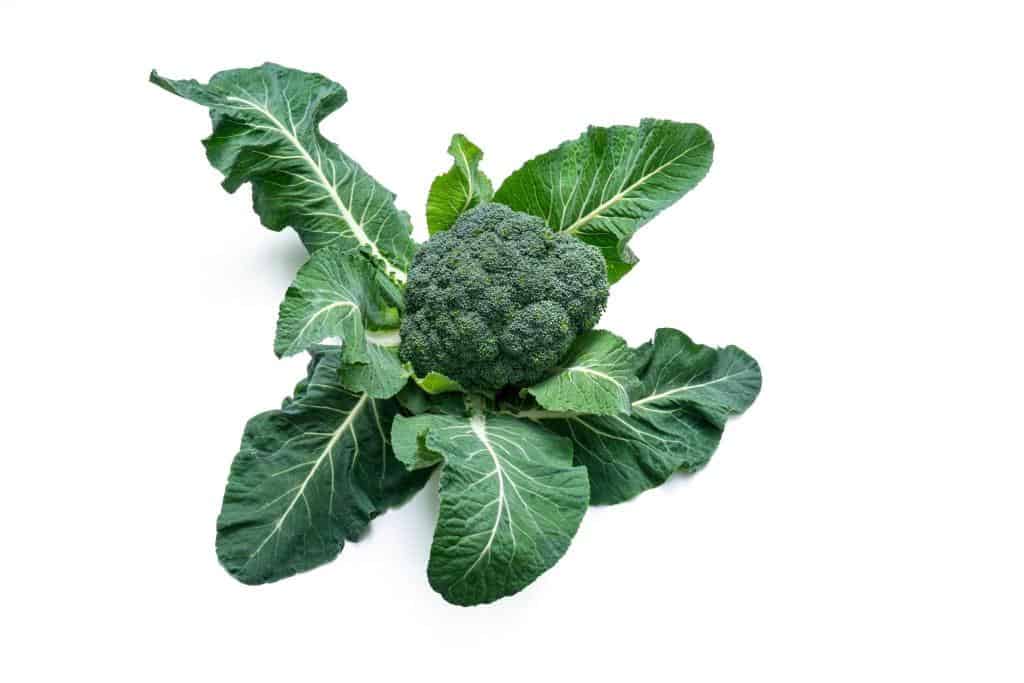
Broccoli is a versatile and nutritious vegetable that is popular in many households. While most people are familiar with the florets and stems of broccoli, the leaves are often overlooked and discarded.
Broccoli leaves are not only edible but also packed with flavor and nutrients. Believe it or not, these vibrant green wonders have a multitude of uses that will leave you wondering why you haven’t been using them all along.
From mouthwatering recipes to ingenious ideas that go beyond the plate, we’re about to dive into the exciting realm of broccoli leaves and show you just how versatile they can be.
In this article, we will explore the many uses of broccoli leaves and provide you with some creative ideas on how to incorporate them into your meals. So, grab your apron, sharpen your culinary skills, and get ready to embark on a leafy adventure like no other. Let’s explore the many uses of broccoli leaves and unleash your inner broccoli aficionado!
Nutritional Value of Broccoli Leaves
Before we dive into the various uses of broccoli leaves, let’s first understand their nutritional value. Broccoli leaves are a rich source of vitamins A, C, and K, as well as folate, calcium, and fiber. They also contain important antioxidants that help protect our bodies against harmful free radicals.
By including broccoli leaves in your diet, you can boost your nutrient intake and support your overall health.
Table: Nutritional Value of Broccoli Leaves
| Nutrient | Amount per 1 cup (Raw) |
| Vitamin A | 2208 IU |
| Vitamin C | 66 mg |
| Vitamin K | 177 mcg |
| Folate | 57 mcg |
| Calcium | 123 mg |
| Fiber | 2.4 g |
Note: Nutritional values may vary depending on the size and freshness of the leaves.
What to Do with Broccoli Leaves? Many Uses of Broccoli Leaves
When it comes to cooking, broccoli leaves are like the unsung heroes of the kitchen. With their tender texture and earthy taste, they make a delightful addition to a variety of dishes.
If you’re looking to add a nutritious punch to your diet, broccoli leaves are a goldmine of vitamins and minerals. Consider blending them into your morning smoothie for an invigorating boost of green goodness. Combined with fruits and other leafy greens, these leaves bring a fresh, vibrant note to your beverage, making it a delicious and nutritious way to start your day.
But wait, the wonders of broccoli leaves don’t stop there! How about using them as a creative and sustainable alternative to traditional wraps? Roll it up, and voila! You have a vibrant, nutrient-packed wrap that’s not only visually appealing but also a guilt-free delight.
In addition to their culinary prowess, broccoli leaves can also step into the limelight as an eco-friendly packaging material. By utilizing broccoli leaves as packaging, you not only reduce waste but also infuse a touch of nature into your gift-giving or shipping endeavors.
So, next time you find yourself face-to-face with a bunch of broccoli, don’t let those leaves go to waste. Embrace their potential, experiment with new flavors, and let the versatility of broccoli leaves take center stage in your kitchen. Your taste buds and the environment will thank you for it!
Culinary Uses of Broccoli Leaves
When it comes to culinary creativity, broccoli leaves hold an often-unexplored realm of possibilities. These vibrant and leafy greens, often overshadowed by their floret counterparts, possess a remarkable ability to elevate your dishes with their unique flavors and textures.
Whether you’re a seasoned cook or a culinary adventurer, incorporating broccoli leaves into your recipes can open doors to a world of culinary delights. Let’s dive deeper into the exciting culinary uses of broccoli leaves and unlock their full potential.
- Sautéing: One simple and delicious way to enjoy broccoli leaves is to sauté them with garlic and olive oil. The leaves cook quickly and develop a pleasant, tender texture. Serve them as a side dish or toss them with pasta for a nutritious meal.
- Steaming: Steaming broccoli leaves helps retain their vibrant color and nutrients. Steam them until they turn bright green and slightly wilted. Add a sprinkle of sea salt and a drizzle of lemon juice for a refreshing and healthy side dish.
- Blanching: Blanching broccoli leaves involves briefly boiling them, followed by an immediate plunge into ice water to retain their color and texture. Blanching is ideal when using broccoli leaves in salads or as a base for wraps and rolls.
- Stir-fries: Add a handful of torn broccoli leaves to your stir-fries for an extra burst of flavor and nutrients. They pair well with other vegetables, tofu, or meat.
- Soups: Enhance the nutritional value of your favorite soups by adding chopped broccoli leaves. They add a vibrant green color and a subtle taste that complements various soup recipes.
- Salads: Fresh, tender broccoli leaves can be a delightful addition to salads. Toss them with other leafy greens, colorful vegetables, and a tangy dressing for a nutritious and refreshing salad.
Broccoli Leaf Chips and Snacks
If you’re looking for a healthy and crunchy snack, broccoli leaves can be transformed into delicious chips. Here’s a simple recipe to get you started:
Ingredients:
- Fresh broccoli leaves
- Olive oil
- Sea salt
- Optional: herbs and spices of your choice (e.g., garlic powder, paprika)
Instructions:
- Preheat your oven to 350°F (175°C).
- Wash the broccoli leaves thoroughly and pat them dry with a paper towel.
- Remove the tough stems and tear the leaves into bite-sized pieces.
- In a bowl, toss the leaves with a drizzle of olive oil until evenly coated.
- Sprinkle sea salt and any desired herbs or spices over the leaves and toss again.
- Spread the leaves in a single layer on a baking sheet.
- Bake for 10-15 minutes or until the edges turn crispy and golden brown.
- Remove from the oven and let them cool before enjoying your homemade broccoli leaf chips.
Broccoli Leaf Pesto and Sauces
Broccoli leaves can serve as an excellent base for pesto and sauces, offering a unique twist to traditional recipes. Try this flavorful broccoli leaf pesto:
Ingredients:
- Fresh broccoli leaves
- Garlic cloves
- Pine nuts or walnuts
- Parmesan cheese (or nutritional yeast for a vegan option)
- Extra-virgin olive oil
- Lemon juice
- Salt and pepper to taste
Instructions:
- Blanch the broccoli leaves by boiling them in salted water for 1-2 minutes, then transfer them to an ice bath to cool.
- Once cooled, squeeze out any excess water from the leaves.
- In a food processor, combine the blanched broccoli leaves, garlic cloves, pine nuts or walnuts, and Parmesan cheese.
- Pulse until the ingredients are roughly chopped.
- While the food processor is running, slowly drizzle in the olive oil until the mixture reaches a smooth consistency.
- Add lemon juice, salt, and pepper to taste, and pulse briefly to combine.
- Taste and adjust the seasoning as desired.
- Use the broccoli leaf pesto as a spread on sandwiches, a sauce for pasta dishes, or a dip for vegetables.
Broccoli Leaf Wraps and Rolls
Broccoli leaves can be a nutritious and low-carb alternative to tortillas or wraps. Fill them with your favorite ingredients for a healthy and satisfying meal. Here are some filling ideas:
- Vegetarian Wrap: Spread hummus or avocado on a broccoli leaf, and add sliced cucumbers, bell peppers, shredded carrots, and sprouts. Roll it up tightly and secure with toothpicks if needed.
- Chicken Caesar Wrap: Spread Caesar dressing on a broccoli leaf, and layer with grilled chicken, cherry tomatoes, Parmesan cheese, and romaine lettuce. Roll it up and enjoy a flavorful wrap.
- Tofu and Veggie Roll: Marinate tofu in soy sauce, ginger, and garlic, then pan-fry until golden. Place the cooked tofu on a broccoli leaf and add julienned vegetables like bell peppers, carrots, and cucumber. Roll it tightly and slice into bite-sized rolls.
Broccoli Leaves in Smoothies and Juices
Adding broccoli leaves to your green smoothies and juices is an excellent way to boost their nutritional content. Here’s a simple green smoothie recipe:
Ingredients:
- Handful of broccoli leaves
- 1 ripe banana
- 1 cup fresh spinach
- 1 cup almond milk (or your preferred liquid)
- Optional: honey or dates for sweetness
Instructions:
- Wash the broccoli leaves thoroughly and remove any tough stems.
- In a blender, combine the broccoli leaves, banana, spinach, and almond milk.
- Blend on high speed until smooth and creamy.
- Taste the smoothie and add honey or dates if desired for sweetness.
- Pour into a glass and enjoy a refreshing and nourishing green smoothie.
Broccoli Leaves in Fermented Foods
Broccoli leaves can be a fantastic addition to homemade fermented foods, such as kimchi or sauerkraut. The natural fermentation process enhances their flavor and preserves their nutritional benefits. Here’s a basic recipe for broccoli leaf kimchi:
Ingredients:
- Fresh broccoli leaves
- Korean chili flakes (gochugaru)
- Garlic cloves, minced
- Ginger, grated
- Fish sauce or soy sauce (or a vegan alternative)
- Salt
Instructions:
- Wash the broccoli leaves thoroughly and cut them into bite-sized pieces.
- In a bowl, combine the broccoli leaves, chili flakes, minced garlic, grated ginger, a splash of fish sauce or soy sauce, and a pinch of salt.
- Mix everything together, ensuring the leaves are coated with the seasonings.
- Pack the mixture tightly into a glass jar, pressing it down to remove any air bubbles.
- Leave about an inch of headspace at the top of the jar to allow for fermentation.
- Close the jar tightly and let it sit at room temperature for 1-2 days to kickstart the fermentation process.
- After 1-2 days, open the jar briefly to release any built-up gases, then close it again.
- Transfer the jar to the refrigerator and let it continue fermenting for another 1-2 weeks.
- Taste the kimchi during the fermentation process to gauge its flavor. Once it reaches your desired level of tanginess and fermentation, it’s ready to be enjoyed.
Broccoli Leaf Tea and Infusions
Broccoli leaf tea is a soothing and nourishing beverage that allows you to make the most of these abundant leaves. Here’s a simple recipe for broccoli leaf tea:
Ingredients:
- Fresh broccoli leaves
- Water
- Optional: honey or lemon for taste
Instructions:
- Wash the broccoli leaves thoroughly.
- Bring a pot of water to a boil.
- Add the broccoli leaves to the boiling water and let them steep for 5-10 minutes.
- Remove the pot from heat and strain the tea to remove the leaves.
- Pour the tea into a cup and add honey or lemon if desired for taste.
- Sip and enjoy the nourishing benefits of broccoli leaf tea.
Other Non-Culinary Uses of Broccoli Leaves
Broccoli leaves have applications beyond the kitchen as well. Here are some surprising non-culinary uses of broccoli leaves:
1. Composting Material
Broccoli leaves, like other plant waste, can be added to your compost pile. They are rich in organic matter and nutrients that can enhance the quality of your compost. Chop or shred the leaves before adding them to your compost bin for faster decomposition. Over time, the compost can be used to enrich your garden soil and promote healthy plant growth.
2. Natural Garden Pest Repellent
Believe it or not, broccoli leaves can help keep unwanted pests away from your garden. Aphids, in particular, detest the smell of broccoli leaves. Placing some leaves around your vulnerable plants can act as a natural deterrent. You can also create a homemade insect spray by blending broccoli leaves with water and straining the mixture. Transfer the liquid to a spray bottle and apply it to your plants to repel pests naturally.
3. Animal Feed
If you have pets or farm animals, broccoli leaves can be a nutritious addition to their diet. They are safe for consumption by rabbits, guinea pigs, and chickens, among others. Ensure that the leaves are thoroughly washed and free from any pesticides or harmful chemicals before feeding them to your animals. Broccoli leaves can provide a healthy and tasty treat that your furry or feathered friends will enjoy.
4. DIY Crafts
Get creative with broccoli leaves by incorporating them into your DIY projects. Dried leaves can be used for various crafts, such as pressed flower arrangements, handmade greeting cards, or decorative bookmarks. Their unique texture and vibrant green color can add a touch of nature to your creations.
5. Natural Dyeing
Broccoli leaves can be used as a natural dye to add green tones to fabrics or craft projects. Boil the leaves to extract their pigments and use the resulting liquid as a dye bath.
Conclusion
Next time you’re preparing broccoli, don’t overlook the leaves! Broccoli leaves are a versatile and nutritious part of the plant that can be used in a variety of ways. From sautéing and pesto to wraps and chips, there are numerous culinary options to explore. Additionally, broccoli leaves can be composted, used as a natural pest repellent, fed to animals, or incorporated into DIY crafts. By utilizing broccoli leaves, you can reduce waste, enhance your meals, and explore the potential of this underrated vegetable. So, get creative and start discovering the many uses of broccoli leaves today!
FAQs
Are broccoli leaves safe to eat?
Yes, broccoli leaves are safe to eat. Just ensure they are washed thoroughly before use.
How do broccoli leaves taste compared to the florets?
Broccoli leaves have a slightly earthy and mildly bitter flavor, similar to other leafy greens.
Can I substitute broccoli leaves for other leafy greens in recipes?
Absolutely! Broccoli leaves can be used as a substitute for other leafy greens like kale, spinach, or Swiss chard in various recipes.
How should I clean broccoli leaves before using them in cooking?
Rinse the leaves under cold running water, gently rubbing them to remove any dirt or debris. Pat them dry with a clean towel or use a salad spinner.
Are there any precautions or allergies associated with consuming broccoli leaves?
Some individuals may have allergies to broccoli or other cruciferous vegetables. If you have known allergies or concerns, it’s best to consult with a healthcare professional.
Can I freeze broccoli leaves for later use?
Yes, you can freeze broccoli leaves. Blanch them briefly in boiling water, then plunge them into an ice bath. Pat them dry, place in a freezer-safe bag or container, and store in the freezer for up to six months.

